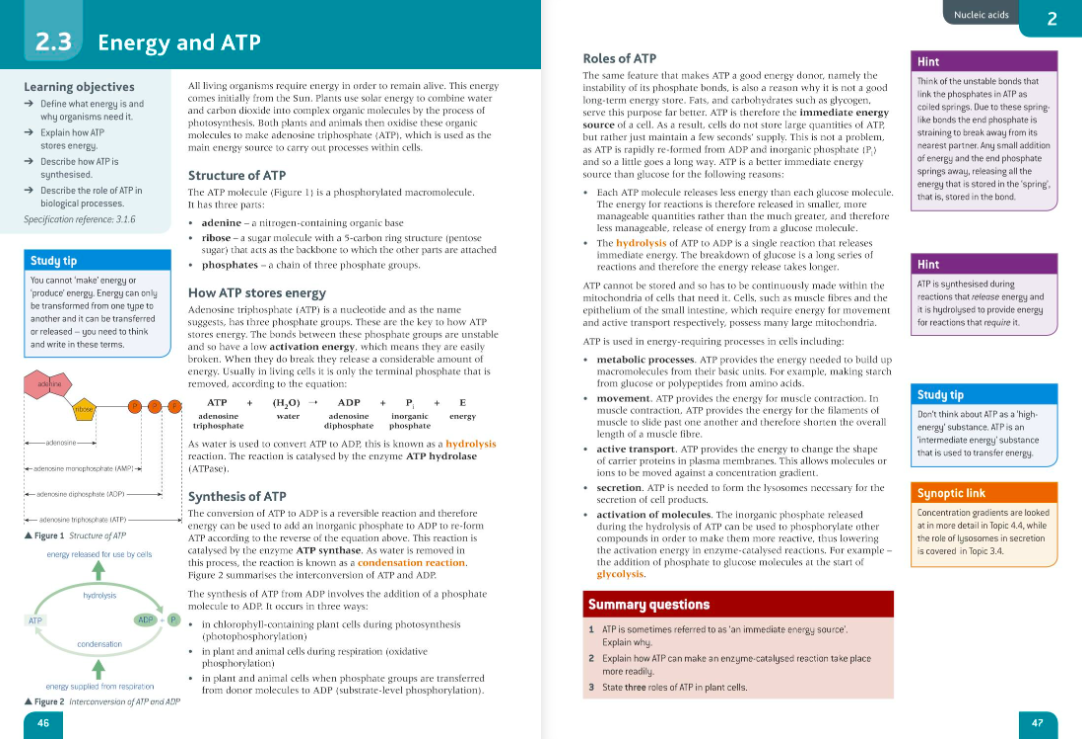What is ATP and its role as an energy source? Explain how ATP stores energy and describe its synthesis in biological processes.

Understand the Problem
The question is asking for insight into ATP, its roles in biological processes, how it stores energy, and the synthesis of ATP. The aim is to understand the functions and importance of ATP in energy transfer within cells.
Answer
ATP stores energy in phosphate bonds and fuels cellular processes.
ATP (adenosine triphosphate) plays a crucial role as the primary energy source in cells. It stores energy in its high-energy phosphate bonds, particularly between the second and third phosphate groups. ATP is synthesized through processes like oxidative phosphorylation and photophosphorylation.
Answer for screen readers
ATP (adenosine triphosphate) plays a crucial role as the primary energy source in cells. It stores energy in its high-energy phosphate bonds, particularly between the second and third phosphate groups. ATP is synthesized through processes like oxidative phosphorylation and photophosphorylation.
More Information
ATP functions as a primary energy currency because of its high-energy phosphate bonds. When ATP is hydrolyzed to ADP and inorganic phosphate, energy is released for cellular processes. It is rapidly synthesized and consumed, making it efficient for short-term energy needs.
Tips
A common mistake is thinking ATP stores energy like a battery; instead, it releases energy when the terminal phosphate bond is broken.
Sources
- Physiology, Adenosine Triphosphate - StatPearls - NCBI Bookshelf - ncbi.nlm.nih.gov
- Adenosine triphosphate (ATP) | Definition, Structure, Function, & Facts - britannica.com
- 2.5.6: ATP- Adenosine Triphosphate - Biology LibreTexts - bio.libretexts.org
AI-generated content may contain errors. Please verify critical information